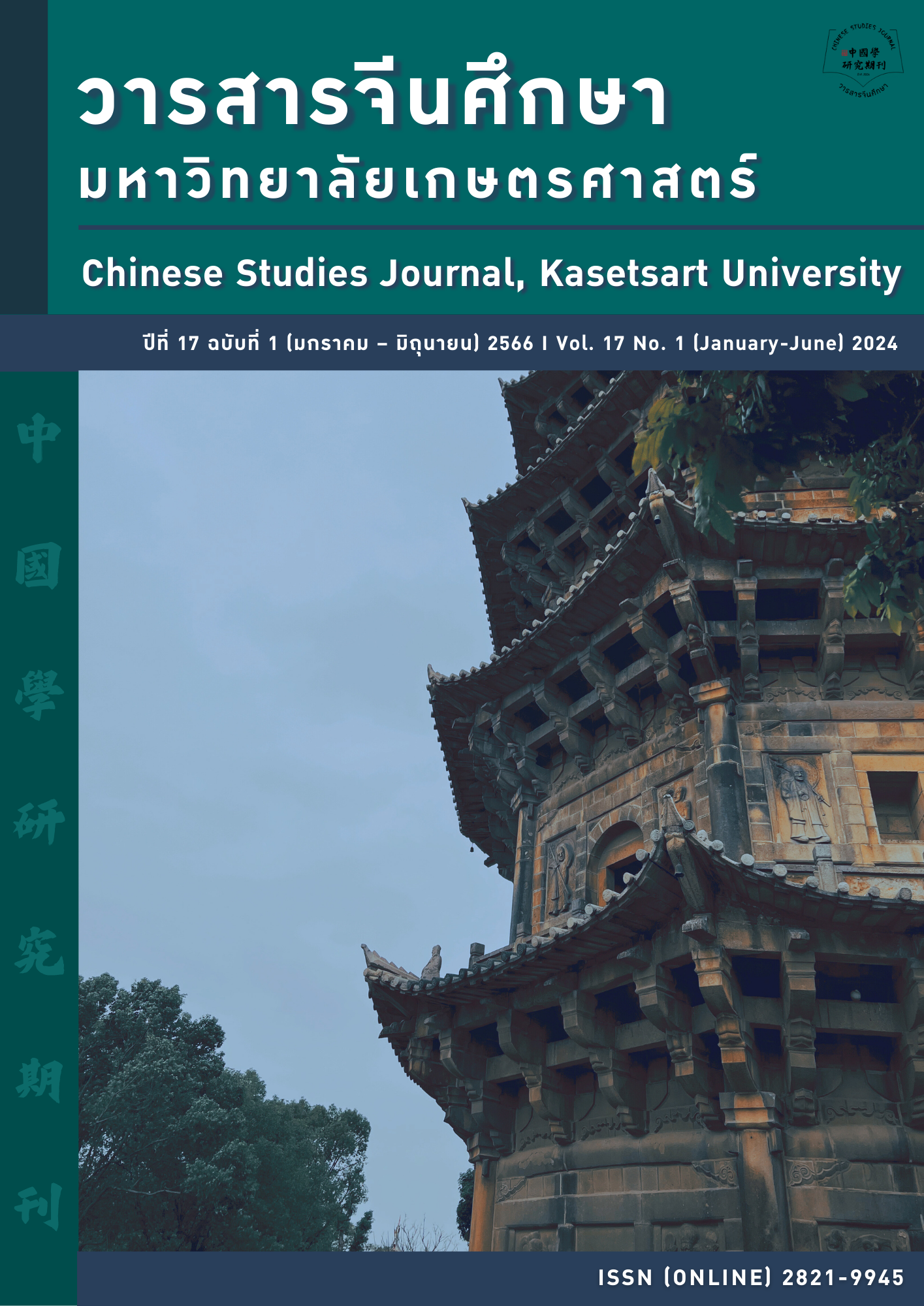A usage-based study on the acquisition of “V+Dlai” construction by Thai intermediate and advanced Chinese learners การศึกษาการใช้โครงสร้างคำกริยาบอกทิศทาง “V+D来” ของผู้เรียนภาษาจีนระดับกลางและสูงในประเทศไทย
Main Article Content
Abstract
This article mainly studies the relationship between the probability of form and meaning and the frequency of use of verb constructions containing "来" by Thai intermediate and advanced Chinese. Through experimental testing, it can be found that the output of the "V+D来" dynamic construction will be affected by prototype, and there is a positive correlation between the formal meaning probability and the frequency of use. The closer the formal meaning probability is, the higher the frequency of use. And among all the dynamic constructions containing "来", "想起来" has the highest prototypicality and possibility of form and meaning.
Article Details

This work is licensed under a Creative Commons Attribution-NonCommercial-NoDerivatives 4.0 International License.
ผลงานทางวิชาการที่ลงตีพิมพ์ในวารสารจีนศึกษา มหาวิทยาลัยเกษตรศาสตร์ เป็นลิขสิทธิ์ของผู้เขียนหรือผู้แปลผลงานนั้น หากนำลงในวารสารจีนศึกษาเป็นครั้งแรก เจ้าของผลงานสามารถนำไปตีพิมพ์ซ้ำในวารสารหรือหนังสืออื่นได้โดยมิต้องแจ้งให้ทราบล่วงหน้า แต่หากผลงานที่ได้รับพิจารณานำลงในวารสารจีนศึกษา เป็นผลงานที่เคยตีพิมพ์ที่อื่นมาก่อนเจ้าของผลงานต้องจัดการเรื่องปัญหาลิขสิทธิ์กับแหล่งพิมพ์แรกเอง หากเกิดปัญหาทางกฎหมาย ถือว่าไม่อยู่ในความรับผิดชอบของวารสารจีนศึกษา มหาวิทยาลัยเกษตรศาสตร์ ทั้งนี้ ความคิดเห็นต่างๆ ในบทความเป็นความคิดเห็นส่วนตัวของผู้เขียน ไม่เกี่ยวกับกองบรรณาธิการวารสารจีนศึกษา มหาวิทยาลัยเกษตรศาสตร์
References
Bybee, J. L. (2012). Language, usage and cognition. Cambridge Univ. Press.
Ellis, N. C. (2006). Selective attention and transfer phenomena in L2 acquisition: Contingency, cue competition,salience, interference, overshadowing, blocking, and Perceptual Learning. Applied Linguistics, 27(2).
Ellis, N. C. (2002). Frequency effects in language processing. Studies in Second Language Acquisition, 24(2), 143–188.
Ellis, N. C. (2008). Usage-based and form-focused SLA: The implicit and explicit learning of constructions. Language in the Context of Use, 93–120.
Ellis, N. C. (2012). What can we count in language, and what counts in language acquisition, cognition, and use? Frequency Effects in Language Learning and Processing, 7–34.
Ellis, N. C. (2015). Cognitive and social aspects of learning from usage. Usage-Based Perspectives on Second Language Learning, 49–74.
曹贤文.(2008).从认知语言学用法论模型透视汉语作为第二语言的教学.《第九届国际汉语教学研讨会论文选》编辑委员会.(eds.)第九届国际汉语教学研讨会论文选,643-649.
蔡金亭 & 王敏.(2020).基于使用取向的二语习得研究:理论、实证与展望.外语与外语教学,(02),1-15+147.
孔令跃 & 邱新仪.(2021).不同频率分布的语言输入对汉语单沟槽框式构式二语习得的影响.世界汉语教学(04),535-547.
马伟忠.(2019).基于用法模型视域下构式语法研究的内涵特点.华侨大学学报(哲学社会科学版),(06),129-138.
牛儒雅.(2021).基于用法模型的探析及应用:认知语法视角.外国语言文学(01),14-31+109.
钮文燕.(2017).基于使用的二语习得观——来自构式语法理论的启发. 合肥工业大学学报 (社会科学版),(06),97-101.
徐承萍.(2017).形符频率、词汇频率和形义映合凸显度在英语构式习得中的效应研究.外语教学与研究(03),428-439+481.
徐承萍.(2020).二语论元构式习得的发展动态性问题.现代外语,(01),69-80.
徐锦芬.(2022).使用驱动二语教学的内涵、理论与实践.解放军外国语学院学报,(06),82-89+115+156.
王初明.(2011).基于使用的语言习得观.中国外语(05),1.
易文静 & 万菁婧.(2021).输入频率分布对汉语二语被动构式习得的影响研究.现代外语.(02),246-257.


